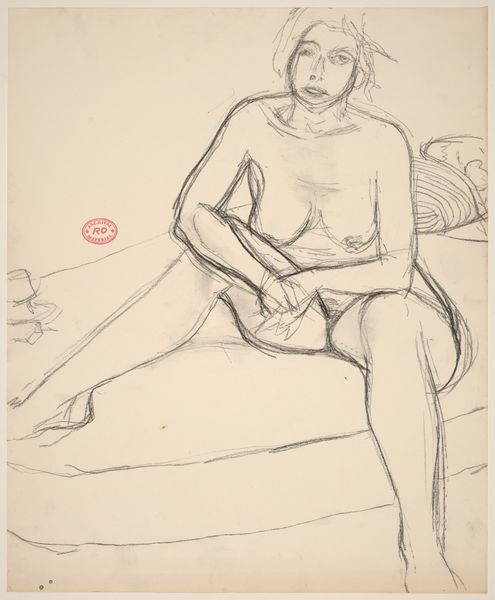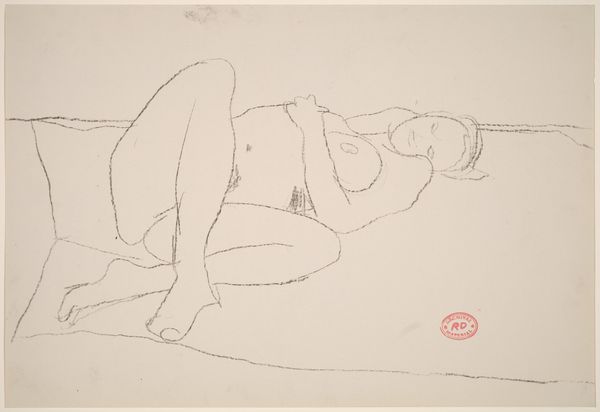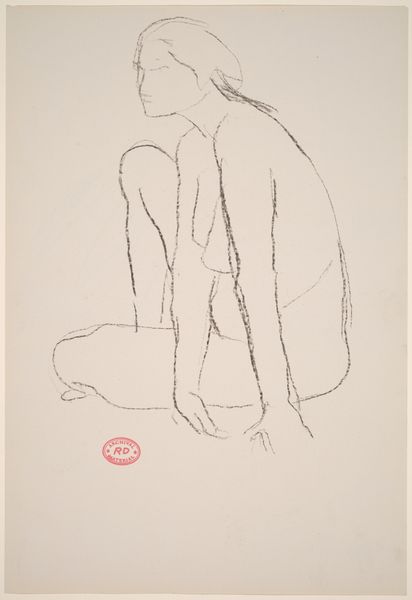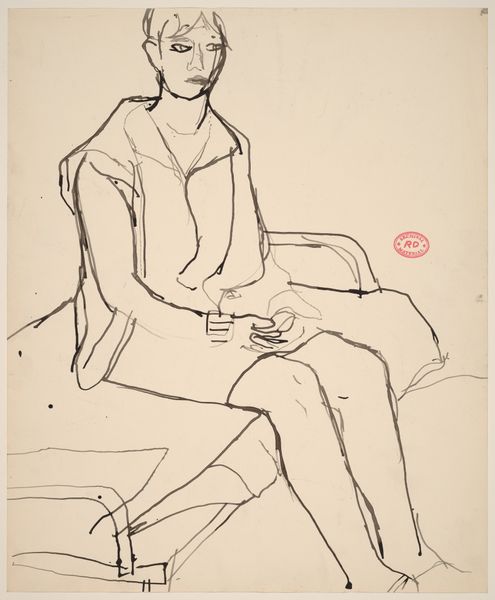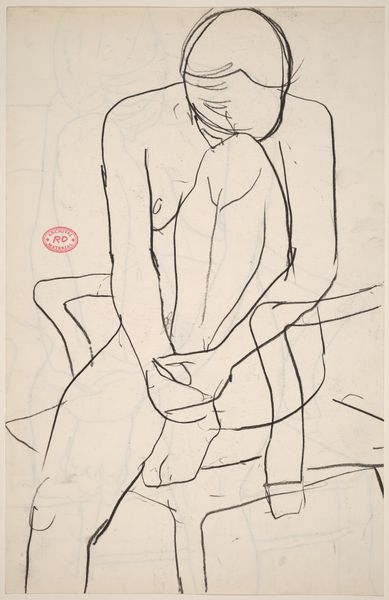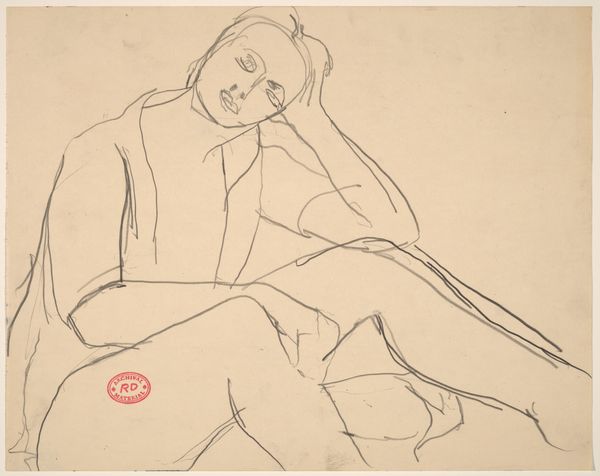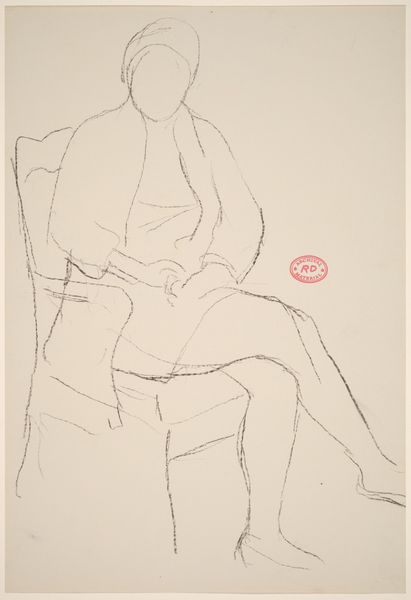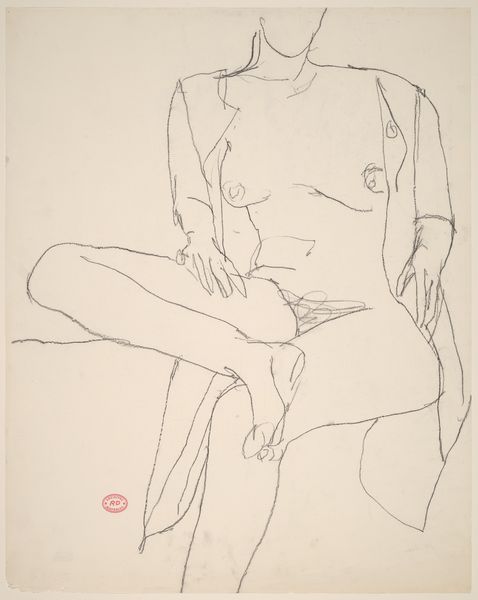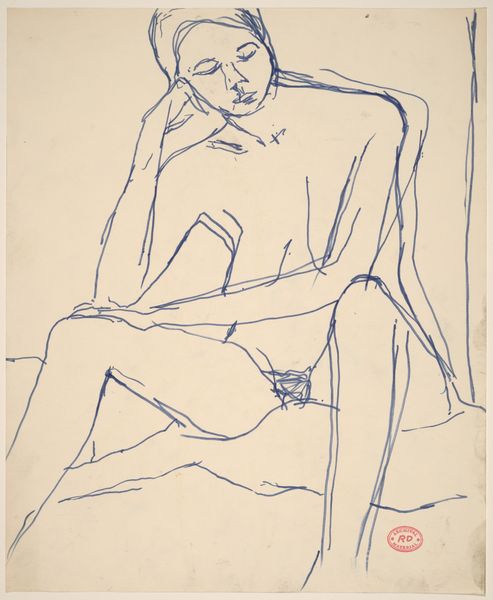![Untitled [woman seated with her legs tucked under her] by Richard Diebenkorn](/_next/image?url=https%3A%2F%2Fd2w8kbdekdi1gv.cloudfront.net%2FeyJidWNrZXQiOiAiYXJ0ZXJhLWltYWdlcy1idWNrZXQiLCAia2V5IjogImFydHdvcmtzL2RhZTc1NjkzLWExY2QtNGM1MC1iODc0LWMxNmU0NDc4M2VkOC9kYWU3NTY5My1hMWNkLTRjNTAtYjg3NC1jMTZlNDQ3ODNlZDhfZnVsbC5qcGciLCAiZWRpdHMiOiB7InJlc2l6ZSI6IHsid2lkdGgiOiAxOTIwLCAiaGVpZ2h0IjogMTkyMCwgImZpdCI6ICJpbnNpZGUifX19&w=3840&q=75)
Untitled [woman seated with her legs tucked under her] 1955 - 1967
0:00
0:00
drawing, pencil
#
portrait
#
abstract-expressionism
#
drawing
#
self-portrait
#
figuration
#
bay-area-figurative-movement
#
pencil drawing
#
pencil
#
portrait drawing
Dimensions: overall: 34.9 x 27.3 cm (13 3/4 x 10 3/4 in.)
Copyright: National Gallery of Art: CC0 1.0
Editor: Here we have Richard Diebenkorn’s “Untitled [woman seated with her legs tucked under her]”, a pencil drawing from sometime between 1955 and 1967. It has a very casual, almost unfinished quality. What strikes you most about this piece? Curator: The sketch feels deeply intimate. Diebenkorn, working in this period, operated in a charged cultural landscape where Abstract Expressionism held sway, particularly its masculine posturing. But his figuration offers an alternative, a private moment, eschewing the grandiose. The “unfinished” quality you mentioned can be read as resisting the demand for a finalized, saleable commodity. Does the pose of the sitter suggest anything to you? Editor: She looks contemplative, almost withdrawn, turned inwards. I guess that fits with what you were saying about a ‘private moment.’ Curator: Exactly. And think about the gaze – it isn’t directed at the viewer. This isn't a depiction meant to seduce or impress a public. How might this quiet introspection, rendered in simple pencil strokes, function as a kind of subtle resistance against the dominant artistic and social expectations of the time? Editor: So, in a way, its very modesty is what makes it subversive? It wasn’t trying to shout, but to offer a different, more personal vision? Curator: Precisely. Diebenkorn challenges the bravado that characterized much of the art world then by choosing the understated, and prioritizing an interior life. I find this to be a potent form of political expression. Editor: That’s fascinating! I hadn't considered the social context that deeply, focusing more on the immediate visual impact. It gives the drawing so much more weight, realizing it. Curator: Seeing art as embedded in its socio-political moment illuminates the choices artists make, and how those choices participate in broader conversations.
Comments
No comments
Be the first to comment and join the conversation on the ultimate creative platform.
